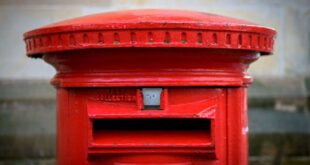It is the debate which could easily cause arguments and splits in families – is Croydon in London, Surrey or even Kent? It has been raging on for decades and we’ve got the definitive answer for you. Chances are if you live in the borough, you’ll be getting Christmas cards addressed to both London and Surrey delivered through your front door.
This is particularly true for those living in the south of the borough in Sanderstead, Purley or Coulsdon, which were the last wards to be brought into the borough. Despite many now accepting that the borough has closer ties to London, there was a time when the town was classed as being in Surrey and some parts of it as being in Kent. Here’s a brief history of how Croydon became part of London.
READ MORE: Map reveals Croydon streets where thousands of new homes have been built
When did people start living in Croydon?
(Image: David Cook)
The first residents are believed to have settled in Croydon from the Roman age, when historians generally agree that people would have farmed saffron in the area. This is because the town lies on the Roman road which links London and Portslade, in Sussex. The earliest documented mention of Croydon is in the joint will of two residents called Beorhtric and Aelfswth, dated about the year 962. In this document, it is called Crogdaene – the Anglo-Saxon spelling.
The origin of the town’s name is thought to be the Anglo-Saxon croh denu, meaning crocus valley. For centuries the area was classed as being within the Wallington hundred, an ancient Anglo-Saxon administrative division of Surrey.
When did the transition to being part of London begin?
In the early 19th century, Croydon was classed as a part of Surrey. A local board of health was formed at the parish of Croydon, St John the Baptist, in the 1840s and this sparked a slow transition from Surrey to London.
Around 40 years later, in 1882, the parish of Croydon was started in the eastern division of the county of Surrey. Historian and long-time South Norwood resident John Hickman said: “The area was 36 miles in circumference and this area included a detached area called Selsdon Creek [now known as Selsdon].
“The town was incorporated into the Royal Charter in 1883 and through that royal charter a corporate body was formed consisting of a mayor, 12 alderman and 36 councillors. The town was then developed into six wards and on November 1, 1905 it was developed into seven wards with 19 alderman and 42 councillors.”
He added: “Under the Redistribution of Seats Act 1885 Croydon was formed into a parliamentary borough returning one member – meaning it had its first MP.” Croydon went on to get two MPs in 1918 as the borough was also divided into two divisions – north and south.
The north included Upper Norwood, Norbury, West Thornton, Beckenham Manor, Thornton Heath and Woodside. The south included Addiscombe, Whitehorse Manor, Broad Green, central Croydon, Shirley, Selsdon and South Croydon. Coulsdon and Purley were not included and remained part of Surrey.

(Image: Dominic Lipinski/PA Wire)
When did Croydon become a borough for the first time?
Croydon became a county borough in 1889 – when its population was finally large enough for this to happen – and was enlarged in 1928 by taking in the parish of Addington. In the late 19th century Croydon became a central borough, which is an administrative area, and so was allowed to create a form of council. County boroughs ceased to exist in 1972 after the Local Government Act, which abolished them, was passed.
And when was Croydon classed as a London borough?

(Image: David Cook)
In 1965 the county borough was abolished and the area was combined with Surrey’s Coulsdon and Purley Urban District to form the London Borough of Croydon. Before this, Coulsdon and Purley were being served by the Metropolitan Police rather then Surrey Police.
Caterham and Warlingham could have ended up being classed as part of the London Borough of Croydon too, but residents requested to remain in Surrey and permission for this to happen was granted by the government. Coulsdon and Purley requested to be left out of Croydon and Greater London as well, but the Government refused. Today, these areas are perhaps those in Croydon that most strongly feel they are still part of Surrey.
Which parts of Croydon used to be classed as Kent?

(Image: Keith Walter)
Parts of Selsdon were definitely classed as Kent in the 19 century, according to Mr Hickman. The area gradually made its way into the Croydon borough, along with Addington, in the early 20 century.
And many of those living just over the Bromley border in West Wickham will say they live in Kent – even though they’re in a London borough. Why do different Croydon wards have different postcodes? Despite Croydon being classed as London, some people in the borough will notice a difference in postcodes.
Mr Hickman said: “The north of the borough has the London postcode. The south of the borough has a Croydon postcode, so a CR0 one, whereas places like South Norwood have a SE25 post code.”
For more news and features about London directly to your inbox sign up to our newsletter here



